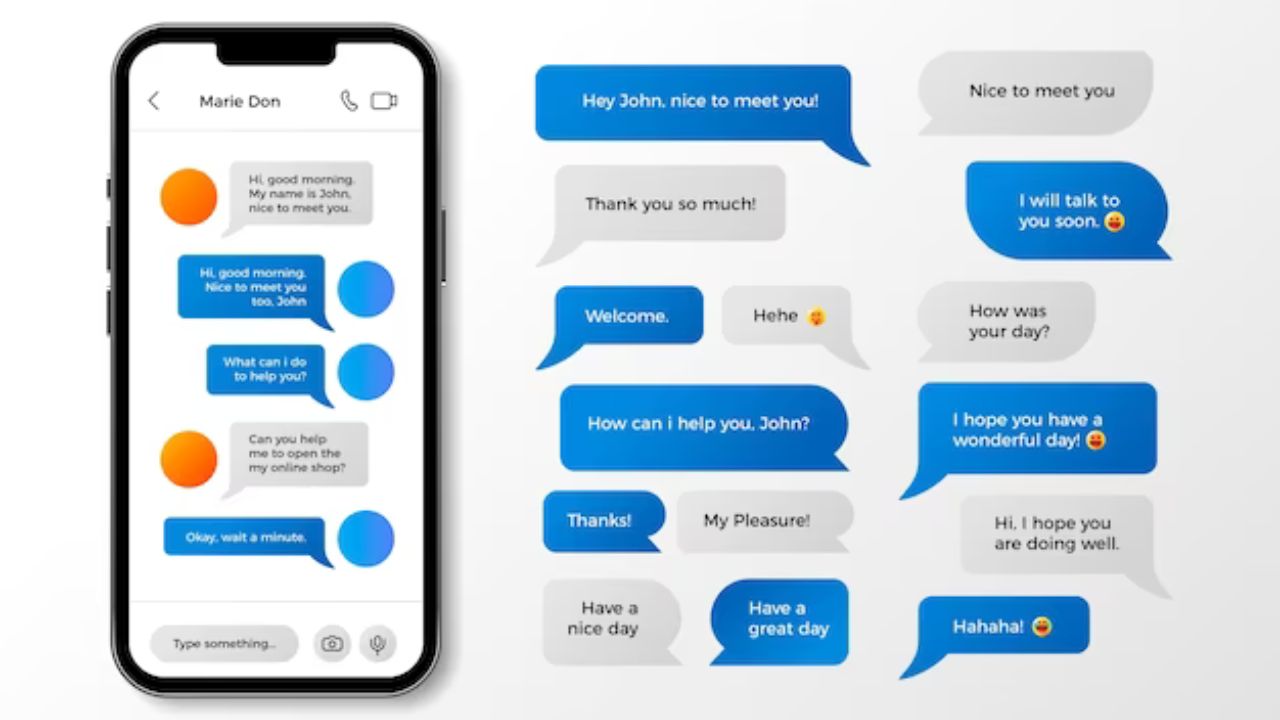EDUCATION
thank you to my family and friends graduation

thank you:As I stand here on the threshold of graduation, excitement fills the air. It’s a time of reflection, accomplishment, and new beginnings. But amidst all the joy and anticipation, there’s one thing that stands out above everything else – gratitude.
Gratitude is a powerful emotion that has the ability to transform lives. It reminds us of our blessings, grounds us in humility, and fosters deep connections with those who have supported us along our journey. And when it comes to family and friends, their unwavering support deserves more than just a passing acknowledgment – it calls for heartfelt appreciation.
In this blog post, we’ll explore why expressing gratitude is so important after graduating. We’ll dive into ways you can thank your loved ones for being there every step of the way. So let’s take a moment to reflect on cherished memories, express our heartfelt thanks, and celebrate the incredible impact these special individuals have had on our lives!
The Importance of Gratitude
Gratitude is a powerful emotion that has the ability to transform our lives and the lives of those around us. It allows us to acknowledge and appreciate the kindness, support, and love we receive from others. In a world that often focuses on what’s lacking or wrong, cultivating gratitude can bring about positive change and greater happiness.
When we express gratitude towards our family and friends, we strengthen our relationships with them. By showing appreciation for their presence in our lives, we let them know how much they mean to us. This simple act of thankfulness deepens our connection with loved ones and fosters a sense of belonging.
Not only does expressing gratitude benefit our relationships, but it also has a profound impact on ourselves. When we take the time to reflect on all that we have been given, it shifts our perspective from scarcity to abundance. We become more aware of the blessings in our life – big or small – which boosts our overall well-being.
Practicing gratitude helps us focus on the present moment rather than dwelling on past regrets or worrying about future uncertainties. It grounds us in the here-and-now and reminds us to savor each experience fully.
In addition to its psychological benefits, research shows that gratitude has physical health benefits as well. Studies have found that grateful individuals tend to experience improved sleep quality, reduced stress levels, lower blood pressure, and increased immune function.
So how can you cultivate an attitude of gratitude? Start by simply saying “thank you” more often – whether through verbal expressions or handwritten notes – show your appreciation for even the smallest gestures. Take time each day to reflect on three things you are grateful for; this practice will help train your mind to notice positivity in your surroundings.
As graduation approaches (or any significant milestone), take this opportunity not only to celebrate your achievements but also express heartfelt thanks…
Thanking Your Family and Friends for Their Support
Graduation day is a monumental milestone in anyone’s life, and it wouldn’t be possible without the unwavering support of our loved ones. Our family and friends have been there through thick and thin, cheering us on every step of the way. So, as we embark on this new chapter, it’s essential to express our heartfelt gratitude.
Our families have believed in us since day one. They’ve celebrated our successes, offered guidance during challenging times, and provided a shoulder to lean on when things got tough. Their love has been the driving force behind our accomplishments.
Likewise, our friends have played an indispensable role in shaping who we are today. They’ve listened to us vent about assignments and exams, encouraged us when doubts crept in, and celebrated with us when triumphs were achieved. Their unwavering friendship has made all the difference.
Expressing gratitude can take many forms – from writing heartfelt thank you notes to organizing a small gathering or even creating personalized gifts that showcase your appreciation for their support throughout your educational journey. The important thing is to show them that their presence has had a profound impact on your success.
Remember those cherished memories? The late-night study sessions filled with laughter or the spontaneous adventures taken together? Take some time to reminisce with your loved ones about these moments while expressing how much they mean to you. Acknowledge that their belief in you never wavered.
Saying thank you may seem like a simple gesture but its impact is immeasurable. It not only acknowledges the sacrifices made by those closest to us but also strengthens those bonds even further. By expressing gratitude towards our family and friends for their support during this critical juncture of our lives, we ensure that they feel valued and appreciated.
So let’s take this opportunity not just to celebrate ourselves but also extend our deepest thanks to those who stood by us throughout this journey. They deserve to be recognized and celebrated for their unwavering support, love
Sharing Memories and Expressing Appreciation
As I reflect on my journey towards graduation, one of the most meaningful aspects is the memories created with my family and friends. From late-night study sessions to celebratory dinners, we have shared countless experiences that have shaped who I am today.
These memories hold a special place in my heart because they represent more than just moments in time; they are a testament to the unwavering support and love that my loved ones have shown me throughout this academic endeavor. Whether it was listening patiently as I rambled about my coursework or cheering me on during those nerve-wracking exams, their presence has meant everything.
Expressing appreciation for these cherished moments is something that cannot be understated. It’s not enough to simply say “thank you” – sharing specific memories and expressing how grateful I am for them holds much deeper meaning. Remembering the times when we laughed until our stomachs hurt or stayed up all night brainstorming ideas reminds me of the joy that comes from having an incredible support system.
I often find myself recounting these stories when reflecting on this milestone achievement. They serve as reminders of the strength, resilience, and determination that propelled me forward during challenging times. Each memory represents an opportunity for growth and gratitude.
So, to my family and friends who stood by me through thick and thin: thank you for being there every step of the way. Your love, encouragement, guidance, and belief in me fueled my success. Words alone cannot express how truly grateful I am for your unwavering support.
Ways to Show Your Gratitude
Expressing your gratitude to your family and friends for their support during your graduation is a gesture that goes a long way. Saying “thank you” is just the beginning, but there are many other ways you can show your appreciation.
One way to show your gratitude is by writing heartfelt thank-you notes. Take the time to sit down and write individual notes expressing how grateful you are for their presence at your graduation ceremony or for any help they provided throughout your academic journey.
Another way to show appreciation is by treating them to a special meal or outing. Plan a get-together with all those who supported you, such as organizing a dinner or hosting a small party at home. This will not only give you an opportunity to express your thanks in person but also create lasting memories together.
Small gestures can also go a long way in showing gratitude. Surprise them with thoughtful gifts that reflect their interests or hobbies, or simply spend quality time with them doing something they enjoy.
In addition, social media provides an excellent platform for public acknowledgments of gratitude. Post photos from your graduation day and write captions thanking each individual who played a role in helping you succeed – this will make them feel appreciated and recognized.
Remember, showing gratitude doesn’t have to be extravagant; it’s more about the thought behind the gesture than its grandeur. By taking the time to express genuine appreciation in personal ways, you’ll strengthen the bond with those who have been there for you every step of the way.
The Impact of Saying Thank You
Saying thank you is more than just common courtesy; it has a profound impact on both the giver and the receiver. When we express gratitude, we acknowledge the kindness and support shown to us by our loved ones. It strengthens our relationships and fosters a sense of connection.
For those who receive our thanks, it can be incredibly validating. It lets them know that their efforts have not gone unnoticed or unappreciated. A simple thank you can uplift someone’s spirits and make them feel valued.
But the impact goes beyond immediate feelings of warmth and appreciation. Studies have shown that expressing gratitude regularly can improve mental well-being, boost self-esteem, and even enhance physical health. Gratitude has been linked to reduced stress levels, improved sleep quality, increased happiness, and overall life satisfaction.
Moreover, saying thank you sets an example for others to follow. When we demonstrate gratitude in our interactions with family and friends, we encourage a culture of appreciation where people feel acknowledged for their contributions.
So let’s not underestimate the power of these two small words – thank you! They hold within them the ability to strengthen bonds, inspire positivity, improve mental health, foster empathy in others,and create a ripple effect of kindness throughout our lives.
Conclusion
Expressing gratitude to our family and friends for their support during our graduation is a meaningful way to show appreciation and strengthen the bond we share with them. The importance of gratitude cannot be overstated; it has the power to uplift spirits, foster positive relationships, and bring joy into our lives.
By sharing memories and heartfelt thanks, we not only acknowledge the role they played in our achievements but also create lasting connections that will endure beyond this milestone. Whether through a heartfelt letter, a thoughtful gift, or organizing a special event to commemorate this momentous occasion together, there are countless ways to express our gratitude.
Saying thank you not only brings happiness and fulfillment to those who receive it but also has an impact on ourselves. It reminds us of all the love and support surrounding us as we embark on new adventures after graduation. This act of appreciation sets the foundation for maintaining strong bonds with loved ones throughout life’s journey.
As we move forward in life after graduation, let us never forget the unwavering support from our family and friends. Let us cherish their presence in our lives by continuously showing gratitude for their love, encouragement, guidance, and belief in us.
So take a moment today to reach out to your loved ones – pick up your phone or write that heartfelt thank-you note – because saying “thank you” is more than just words; it is an expression of deep appreciation that can strengthen relationships forever.
Remember: Gratitude turns what we have into enough!
Thank you!

EDUCATION
Why the Envato Grammarly Canva Package is a Must-Have for Content Creators

Are you a content creator looking to up your game and streamline your workflow? Look no further than the Envato Grammarly Canva Package! This powerhouse combo is a game-changer for anyone who wants to produce top-notch content efficiently and effectively. Let’s dive into why this package is essential for all content creators out there.
What is included in the package?
The Envato Grammarly Canva Package is a comprehensive toolkit designed to streamline content creation for writers and designers alike. This package includes access to Grammarly Premium, a powerful writing assistant that helps you craft error-free and polished content. With advanced grammar checking, style suggestions, and plagiarism detection features, Grammarly ensures that your writing is clear, concise, and engaging.
In addition to Grammarly, the package also provides access to Canva Pro – a user-friendly graphic design platform that offers thousands of templates for social media posts, presentations, posters, and more. With Canva Pro’s drag-and-drop interface and customizable elements, you can easily create visually stunning graphics to complement your written content.
By combining the strengths of Grammarly and Canva in one convenient package, content creators have everything they need to produce high-quality written and visual content efficiently.
Benefits of using Grammarly and Canva for content creation
When it comes to content creation, utilizing tools like Grammarly and Canva can elevate the quality of your work.
Grammarly ensures that your writing is free from grammatical errors, spelling mistakes, and awkward phrasing, helping you communicate more effectively with your audience. It acts as a virtual proofreader, offering suggestions for improvement and enhancing the overall readability of your content.
On the other hand, Canva provides creative design solutions for visual elements such as graphics, images, and templates. With its user-friendly interface and vast library of customizable designs, Canva empowers creators to bring their ideas to life visually.
By combining the strengths of Grammarly’s language checks with Canva’s design capabilities, content creators can produce high-quality materials that engage readers on multiple levels. Whether you’re crafting blog posts, social media graphics, or marketing materials – this dynamic duo has got you covered!
How to use the package effectively
Once you’ve got your hands on the Envato Grammarly Canva Package, it’s time to make the most of these powerful tools for content creation. First, start by integrating Grammarly into your writing process. Install the plugin and let it work its magic as you draft your content. Pay attention to the suggestions it offers to enhance your grammar, style, and tone.
Next, dive into Canva and explore its wide range of design templates. Whether you’re creating social media graphics, presentations, or marketing materials, Canva has you covered with easy-to-use features. Customize fonts, colors, and layouts to reflect your brand’s identity effectively.
Combine the strengths of both tools by using Grammarly to refine your written content before transferring it over to Canva for visually appealing designs. Experiment with different combinations until you find a seamless workflow that boosts your productivity and creativity.
Success stories from content creators using the package
Content creators who have embraced the Envato Grammarly Canva Package are reaping the benefits of streamlined workflow and enhanced content quality. By using Grammarly, writers can ensure their text is error-free and polished to perfection. This not only saves time on proofreading but also elevates the professionalism of their work.
On the other hand, Canva provides a user-friendly platform for creating visually stunning graphics that complement written content seamlessly. Whether it’s social media posts, blog banners, or infographics, Canva empowers creators to bring their ideas to life in a visually appealing way.
Success stories from content creators using this package highlight how their productivity has increased while maintaining high standards of quality. The combination of Grammarly and Canva has enabled them to produce engaging and professional-looking content consistently.
The Envato Grammarly Canva Package has become an essential tool for content creators looking to elevate their work and stand out in a crowded digital landscape.
Comparison with other similar packages
When it comes to content creation tools, the Envato Grammarly Canva Package stands out among other similar packages in the market. While some tools may offer grammar checking or design capabilities individually, this package combines both essential elements seamlessly.
Unlike standalone platforms that require switching between different applications for editing and designing, the Envato Grammarly Canva Package provides a comprehensive solution in one integrated package. This convenience saves time and streamlines the creative process for content creators.
Furthermore, the collaboration between Grammarly’s advanced writing suggestions and Canva’s versatile design features offers a unique synergy that enhances the overall quality of content produced. The seamless integration of these two powerful tools empowers users to elevate their creativity and productivity effortlessly.
When compared to other competing packages in the market, the Envato Grammarly Canva Package emerges as a game-changer for content creators seeking an all-in-one solution for their writing and design needs.
Conclusion: Why the Envato Grammarly Canva Package is a game-changer for content creators
The Envato Grammarly Canva Package is undeniably a game-changer for content creators. By combining the powerful tools of Grammarly and Canva in one comprehensive package, creators can elevate their content to new heights. The seamless integration of grammar checking, design templates, and editing capabilities streamlines the content creation process and ensures high-quality results every time.
Whether you’re a blogger, social media influencer, or business owner looking to enhance your online presence, this package offers unmatched value and convenience. Say goodbye to errors in grammar and design inconsistencies – with the Envato Grammarly Canva Package, you have everything you need to create professional-looking content that captivates your audience.
Don’t miss out on this opportunity to take your content creation skills to the next level. Invest in the Envato Grammarly Canva Package today and unlock endless possibilities for creating engaging and visually appealing content that stands out in a crowded digital landscape.
EDUCATION
Winning Strategies: How a Boulder Child Custody Lawyer Can Help You Achieve Custody

Table of Contents
- Practical Strategies to Present Your Case
- The Role of a Child Custody Lawyer
- How to Gather and Present Crucial Evidence
- Factors Judges Consider in Custody Cases
- Maintaining a Child-Friendly Approach
- Real-Life Examples of Successful Custody Strategies
Key Takeaways
- Understand the role of a child custody lawyer in custody disputes.
- Learn practical strategies to present your case favorably.
- Discover how to gather and present crucial evidence.
- Understand the factors judges consider in custody cases.
- Get tips on maintaining a child-friendly approach during disputes.
Practical Strategies to Present Your Case
Winning a child custody case requires a well-thought-out approach. Start by formulating a solid argument about your child’s best interests. Detailed knowledge of your child’s needs and interests can make a significant difference. Be prepared to explain how your proposed custody arrangement aligns with these needs. Judges appreciate it when parents present comprehensive plans prioritizing the child’s well-being over personal conflicts.
Additionally, maintaining a friendly demeanor inside and outside the courtroom is crucial. Judges favor parents who can remain composed and handle disputes maturely. Your behavior is a testament to your parenting capabilities and can significantly influence the judge’s decision. Recent research indicates that a calm and cooperative approach strengthens one’s position in custody battles, highlighting the importance of emotional intelligence during such proceedings. Furthermore, showing a willingness to cooperate with the other parent can demonstrate your commitment to ensuring your child’s stable and nurturing environment.
The Role of a Child Custody Lawyer
Having a boulder child custody lawyer by your side is invaluable when embroiled in a custody dispute. These legal professionals help navigate the intricate legal processes while ensuring your rights as a parent are protected. They employ their expertise to guide you, develop effective strategies, and present your case in the best possible light. From understanding legal jargon to representing you in court, a child custody lawyer is a crucial advocate for you and your child’s best interests.
A child custody lawyer is proficient in understanding fundamental legal principles and can help you comprehend the court’s criteria to make decisions. Familiar with local laws and court expectations, a lawyer can anticipate potential challenges and prepare you accordingly. By engaging with a skilled lawyer, you gain a significant ally who can bolster your chances of a favorable outcome. Moreover, their experience in similar cases can provide insight into likely scenarios, helping you to stay one step ahead in the legal process.
How to Gather and Present Crucial Evidence
Strong evidence forms the backbone of a convincing custody case. Begin by compiling comprehensive documentation that reflects your active involvement in your child’s life. School records, medical records, and pictures of shared activities serve as tangible proof of your dedication. Presenting this information cleanly and organizing it is essential to creating a persuasive narrative. Detailed records highlight your consistency and commitment, critical factors judges look for in custody cases.
Moreover, testimonies from teachers, doctors, and close family friends can lend additional credibility to your case. These testimonies offer an unbiased perspective of your relationship with your child, providing the court with a clearer picture of your parental involvement. This meticulous approach to gathering and presenting evidence is crucial for a robust and compelling custody case. Assembling a portfolio of evidence strengthens your position and visually represents your role in your child’s life, making it harder for opposing arguments to undermine your case.
Factors Judges Consider in Custody Cases
Judges consider various factors to prioritize child welfare when deciding on custody arrangements. The child’s age, physical and emotional well-being, and specific needs are important considerations. The judge also assesses each parent’s ability to meet these needs effectively. Recognizing these factors to tailor your case around highlighting your strengths and addressing potential shortcomings is crucial.
Economic stability, living conditions, and the ability to provide a nurturing environment also play a significant role in the judge’s decision. A parent’s history of involvement in the child’s life and willingness to cooperate with the other parent are critical factors. By comprehensively understanding and addressing these aspects, you can present a compelling case that aligns with the court’s priorities. It’s essential to portray a living situation that not only meets the basic needs but also fosters emotional and psychological growth, which is seen as invaluable in the eyes of the court.
Maintaining a Child-Friendly Approach
Throughout the custody proceedings, maintaining a child-centric approach is paramount. Avoid disparaging remarks about the other parent in front of your child, as this can adversely affect their emotional well-being. Focusing on the child’s best interests helps demonstrate maturity and responsibility. Continuously emphasizing your commitment to your child’s happiness and stability can create a favorable impression on the court.
Strive to preserve a stable routine for your child, ensuring a sense of normalcy amid the legal battle. Children thrive on consistency, and maintaining their daily schedule can minimize the psychological impact of custody disputes. Communication is key. Engage in open, honest conversations with your child about changes while providing reassurance and support. Demonstrating your dedication to your child’s emotional health not only benefits them but also portrays you as a responsible and caring parent in the eyes of the court. Judges often look favorably upon parents who can facilitate a smooth transition for their children during such tumultuous times.
Real-Life Examples of Successful Custody Strategies
Real-life examples demonstrate how strategic approaches can lead to successful custody outcomes. For example, some parents have proposed flexible visitation schedules to accommodate their child’s extracurricular activities, showing their commitment to the child’s interests above all else. These strategies show an understanding of the child’s daily life and a willingness to adapt for their happiness.
Others have chosen mediation to negotiate mutually agreeable arrangements, reflecting their willingness to cooperate and prioritize the child’s well-being. These actions speak volumes about a parent’s dedication and ability to create a supportive, harmonious environment for their child. The success stories of parents who have effectively used these strategies emphasize the importance of a balanced, thoughtful approach in custody disputes. These real-life scenarios offer valuable insights and inspiration for those facing similar challenges.
EDUCATION
Crafting Memorable Moments: The Role of Glass Trophies in Awards and Recognitions

Key Takeaways:
- Glass trophies play a significant role in commemorating achievements and milestones.
- They offer a versatile, elegant, customizable option for various events and awards.
- Understanding the design and craftsmanship behind glass trophies can enrich their significance.
- Proper maintenance ensures the lasting beauty of glass trophies.
Table of Contents:
- The Importance of Trophies in Celebrations
- Types of Glass Trophies and Their Uses
- Design and Customization Options
- The Craftsmanship Behind Glass Trophies
- How to Maintain and Care for Glass Trophies
- Final Thoughts on the Significance of Glass Trophies
The Importance of Trophies in Celebrations
Trophies have always been vital to acknowledging accomplishments and milestones. They encourage people to pursue greatness by acting as concrete reminders of accomplishment. Whether it is an academic award, a sports victory, or a corporate achievement, trophies are indispensable in our society. A glass trophy can add an element of sophistication and elegance to any awarding ceremony, enhancing the winner’s sense of accomplishment. These trophies commemorate achievements and inspire others to aspire for similar success, creating a culture of excellence and continuous improvement.
Research indicates that recognition through awards significantly impacts an individual’s motivation and performance. This underlines the psychological importance of trophies in both personal and professional contexts.
Types of Glass Trophies and Their Uses
Glass trophies come in various forms and styles, making them suitable for diverse events. Some common types include:
- Cup Trophies: Commonly associated with sports and competitive events, these trophies symbolize victory and athletic prowess. Their classic design often includes a wide, open cup mounted on a pedestal, making them instantly recognizable and cherished by athletes.
- Plaque Trophies: Ideal for academic and corporate recognitions, plaque trophies can be wall-mounted or displayed on a desk. They often feature inscriptions highlighting specific achievements, such as “Employee of the Month” or “Top Salesperson,” making them perfect for acknowledging professional success.
- Sculptured Trophies: These are used in artistic and performance awards and can be molded into any shape, representing various forms of creative expression. Sculptured trophies are often highly customized, capturing the essence of the awardees’ talents and contributions to their field.
The versatility of glass trophies allows them to be utilized in various events, from local community recognitions to international award ceremonies. Each type carries its unique significance, enhancing the overall impact of the award and making the recipient feel truly honored.
Design and Customization Options
One of the most appealing aspects of glass trophies is their ability to be customized. Organizers can choose from various designs, incorporate logos, and add personalized engravings to make each trophy unique. These elements enhance the aesthetic appeal and add emotional value to the award. The flexibility in design allows the trophy to represent the essence of the achievement and the event.
For example, a corporate award might feature the company logo and a motivational quote, while a sports trophy might include the team’s emblem and the event’s date. By this degree of personalization, each recipient is certain to have a sentimental attachment to their reward, making it a cherished keepsake. Additionally, modern techniques such as 3D laser engraving enable intricate designs to be etched into the glass, adding a touch of sophistication and innovation to the trophies.
The Craftsmanship Behind Glass Trophies
The creation of glass trophies is an art that combines skill and precision. Artisans carefully design and shape the glass, often incorporating intricate details to create stunning pieces. This process involves understanding the properties of glass and mastering various techniques to manipulate it into the desired form. From blowing and casting to cutting and polishing, each step in producing a glass trophy requires meticulous attention to detail. High-quality materials ensure durability and clarity, allowing the finished product to sparkle and catch the light beautifully. The craftsmanship behind these trophies enhances their visual appeal and adds a layer of prestige and value, making each award a true masterpiece.
How to Maintain and Care for Glass Trophies
Proper maintenance is essential to preserve the beauty of glass trophies. Regular cleaning with a soft cloth and gentle detergent can help maintain their shine. Handling them with care is essential to avoid scratches and chips. Additionally, storing them in a safe place away from direct sunlight can prevent damage from UV rays.
To clean a glass trophy effectively, apply a mixture of mild soap and water with a soft, lint-free cloth. Avoid abrasive cleaners and rough materials that could scratch the surface. Also, consider applying a small amount of vinegar for a streak-free finish. When displaying glass trophies, ensure they are placed on stable surfaces and are protected from falling or being knocked over. Following these simple care tips ensures that your glass trophies remain pristine and shine for years.
Final Thoughts on the Significance of Glass Trophies
Glass trophies are more than just awards; they symbolize hard work, dedication, and success. By understanding their importance, designs, and maintenance, one can truly appreciate the value they bring to any celebratory occasion. Whether recognizing a small achievement or celebrating a grand victory, a well-crafted glass trophy can make the moment unforgettable.
The lasting impact of a glass trophy extends beyond the award ceremony. It is a constant reminder of the recipient’s achievements, encouraging them to strive for excellence. Additionally, glass trophies can inspire others within the community or organization to pursue their goals with determination and passion. These elegant and timeless awards are crucial in celebrating and perpetuating a culture of success.
-

 LOVE MESSAGES7 months ago
LOVE MESSAGES7 months agoSweet Love Messages for Her to Make Her Smile
-

 LOVE MESSAGES7 months ago
LOVE MESSAGES7 months ago100 Romantic Good Evening Messages For Her & Him
-

 LOVE MESSAGES7 months ago
LOVE MESSAGES7 months agoRomantic Love Messages For My Husband With Images
-

 LOVE MESSAGES7 months ago
LOVE MESSAGES7 months ago50 Just Checking on You Text Messages for Him & Her
-

 LOVE MESSAGES7 months ago
LOVE MESSAGES7 months agoSweet Love Messages For My Wife With Images
-

 LOVE MESSAGES7 months ago
LOVE MESSAGES7 months ago50 Cute Good Night Sweet Dreams Messages For Lovers
-

 LOVE MESSAGES7 months ago
LOVE MESSAGES7 months ago25 Romantic I Love You Messages for Her
-

 LOVE MESSAGES7 months ago
LOVE MESSAGES7 months agoLong Good Morning Messages to Make Her Fall in Love
